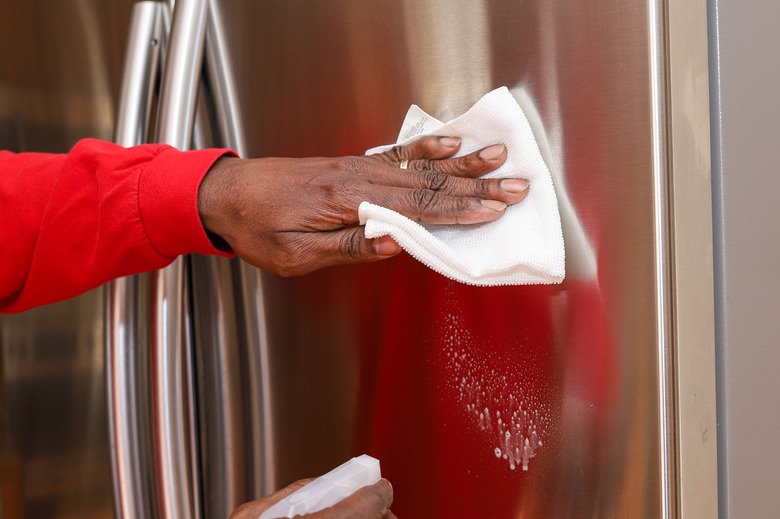How To Remove Metal Scratches
Removing metal scratches can be more or less onerous depending on the metal and the depth of the scratches. Very hard metals, such as stainless steel, don't scratch easily, and when they do, the job of removing them may take some time. Softer metals, like copper, scratch more easily, but the scratches are easier to remove.
There are basically four strategies for removing metal scratches: sanding, rubbing with weak acid (vinegar), rubbing with an abrasive powder, and rubbing with metal polish. The three rubbing techniques are relatively easy, but when scratches are deep, sanding is often the only way to remove them.
How to Rub Out Fine Scratches
How to Rub Out Fine Scratches
When you have scratches on housewares and appliances made of stainless steel or some other metal that is very light but still bothersome, try rubbing them out with a microfiber cloth moistened with vinegar. Rub in a circular motion and keep going until the scratches are gone. This works especially well on copper, and don't worry — vinegar won't damage the patina as long as you don't let it sit.
Sometimes, you need an abrasive to cut a little deeper but not deep enough to make new scratches. Dust a chlorine-free cleaning powder, such as Bon Ami or Bar Keepers Friend, on the scratch and rub it in with a microfiber cloth. Whether you use vinegar, a cleaning powder, or both, be sure to rinse it off with plenty of clean water when you're finished.
Sanding Out Deeper Scratches
Sanding Out Deeper Scratches
You need sandpaper to remove deeper scratches from metal but not just any sandpaper. Use wet/dry sandpaper (it's either black or gray and has a waterproof fabric backing) and keep it lubricated with water while you're working.
Start with a fairly coarse grit, such as 120, and sand by hand going with the grain of the metal. Never go against the grain or you'll just create more scratches that may be even harder to remove. After wearing down the metal to the depth of the scratch, use progressively finer grits to smooth out the metal, ending with a very fine grit, such as 400 or 600. Clean off the sanding dust with a spritz of vinegar after finishing with each grit and then wipe the metal dry.
Removing Scratches With Metal Polish
Removing Scratches With Metal Polish
Metal polishes usually contain fine abrasives that can also remove scratches, but you need to use one designed for the type of metal you're cleaning. Some metal polishes are all-purpose, but some are intended for use on only certain types of metal, such as brass or bronze. Restorative metal polishes contain heavier abrasives than polishes used for everyday maintenance, and they also contain chemicals that can dissolve the surface layer, so they are best for deep scratches.
Rub the polish into the scratch with a microfiber cloth. Rub with the grain of the metal going in one direction only (not back and forth) until the scratch is no longer visible. Then, use a clean microfiber cloth to remove excess polish, again rubbing with the grain in a single direction. Finish by wiping the surface dry,
